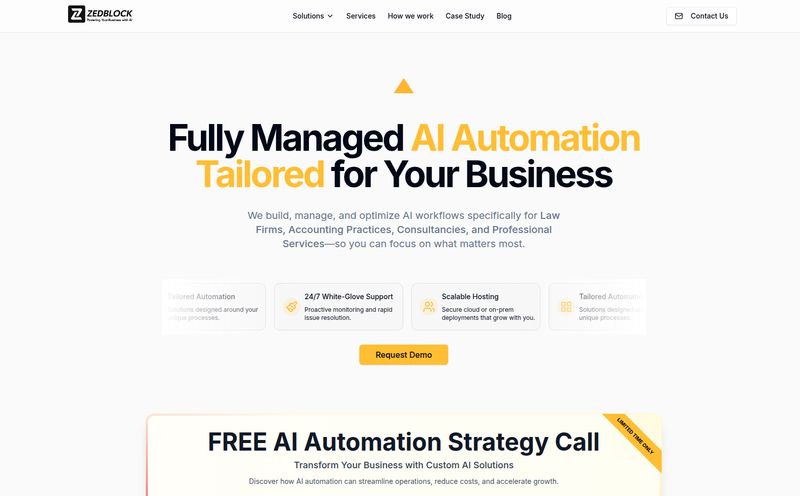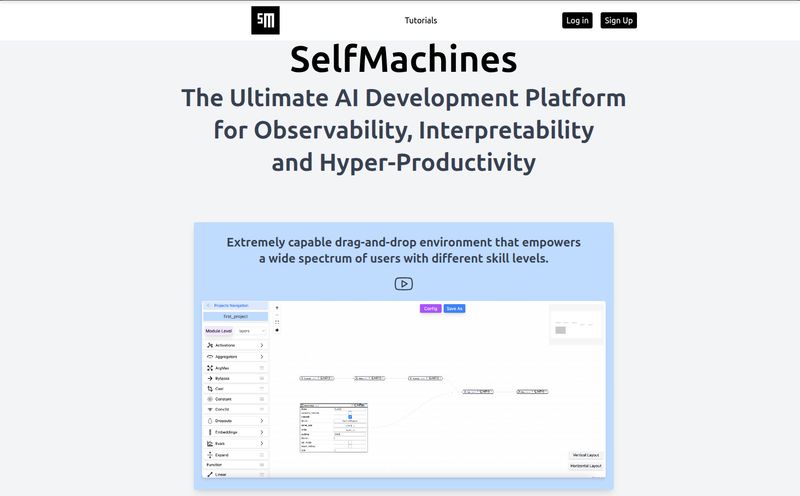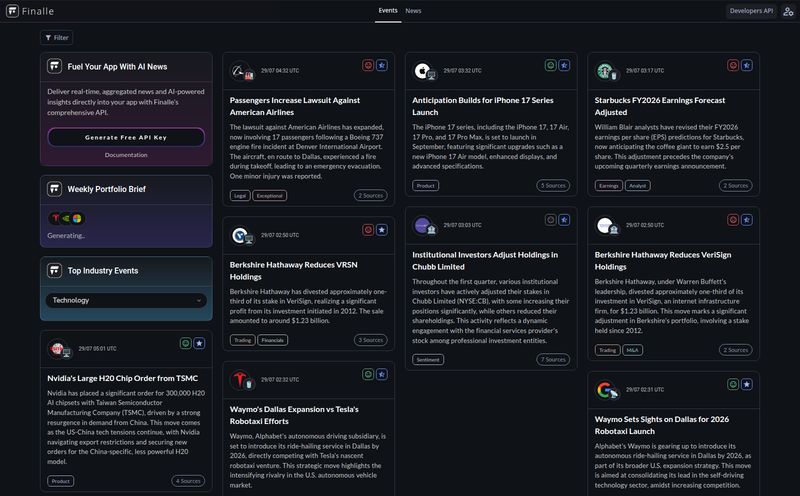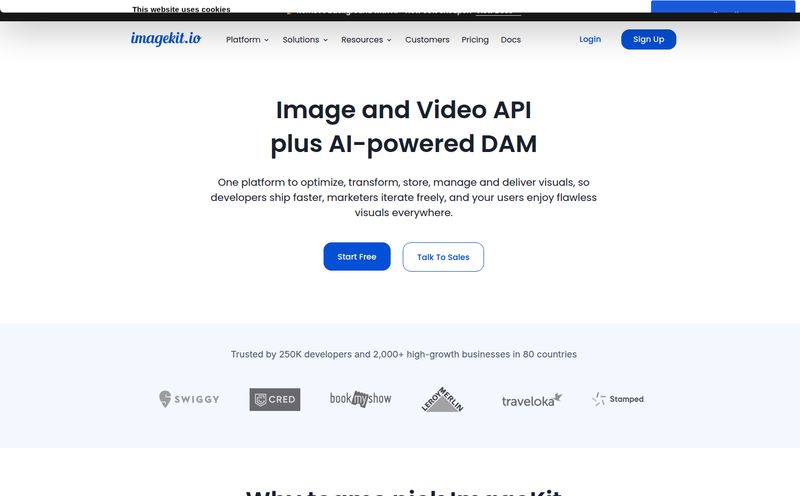The AI world is moving at a blistering pace. One minute we're all playing with ChatGPT, the next, there are AI agents promising to automate our entire lives. As someone who's spent years in the trenches of SEO and traffic generation, I've seen a lot of hype cycles. And the current AI wave? It's a tsunami.
The problem is, for most people—business owners, marketers, operations managers—actually building something with this powerful new tech feels out of reach. You hear terms like API calls, vector databases, and LLM fine-tuning and your eyes just glaze over. It feels like you need a computer science degree just to build a simple AI-powered customer service bot. It’s a frustrating feeling, being on the outside looking in on a gold rush.
But what if you didn't need to be a coding wizard? What if there was a tool that acted like a set of Lego bricks for building powerful AI applications? That's the promise of MindStudio. I’ve been kicking the tires on this platform, and I have some thoughts. A lot of them, actually.
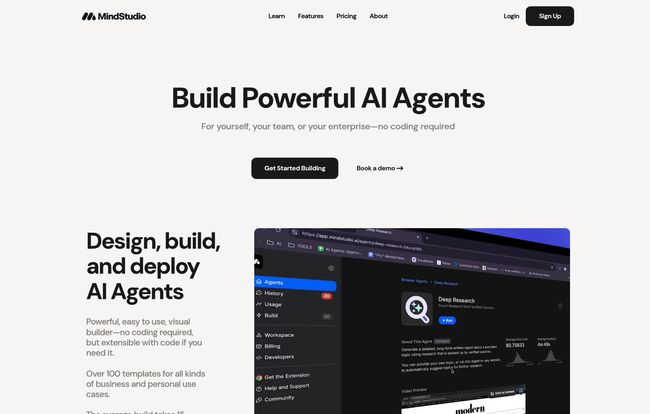
Visit MindStudio
So What Exactly is MindStudio?
Strip away all the jargon, and MindStudio is a no-code platform for building AI agents. Think of it like Webflow or Squarespace, but instead of websites, you’re building custom AI-driven workflows and applications. It’s designed for the people who have the great ideas but not necessarily the Python skills to bring them to life.
The platform claims that over 150,000 AI agents have already been deployed by everyone from small businesses to big enterprise and government clients. That's a pretty hefty number and suggests there's some real substance behind the shiny homepage. It's not just for individuals tinkering on a weekend project; it’s aimed at solving actual business problems.
The Feature Buffet: What's On The Menu?
Okay, this is where things get interesting. A platform can call itself “no-code” all day, but if the features are shallow, it's just a toy. MindStudio, I was pleased to find, is definitely not a toy. It's more like a Swiss Army Knife for AI creation.
More Than Just a Chatbot Builder
When you hear “AI agent,” you might just think of a little chat bubble in the corner of a website. And yes, you can build that. But you can also build a whole lot more. We're talking about deploying your creations as full-blown AI-powered web apps, autonomous agents that run on a schedule, browser extensions that help you work smarter, or even simple API endpoints that you can plug into your existing software. The flexibility here is the first thing that really stood out to me. It's about creating a tool that fits your process, not the other way around.
Your AI Automation Swiss Army Knife
This is the core of the platform. You can visually chain together different functions to create some seriously useful automations. Need an agent that generates blog post outlines? Done. How about one that takes a PDF and summarizes it for you? Easy. It can generate structured data (like JSON from unstructured text), create audio from text for a quick podcast, or even generate HTML code. This is the kind of stuff that saves businesses tangible hours of manual work.
I’ve seen some tools that are good at text generation and others that are good at data processing. MindStudio seems to be trying to bring it all under one roof, which I appreciate. Fewer tabs, more focus.
Connecting to the Outside World
An AI agent that can't access fresh information is pretty useless. MindStudio gets this. You can set up your agents to ingest data from social media feeds, search results, or by scraping a webpage or PDF. Plus, and this is critical for any serious business use case, it has robust integration capabilities through APIs and Webhooks. This means your MindStudio agent can talk to your CRM, your Slack workspace, or pretty much any other modern software tool you rely on. That's how you go from a cool experiment to a core part of your operational workflow.
Let's Talk Money: The MindStudio Pricing Tiers
Alright, the all-important question: what's this going to cost? Pricing can make or break a tool for small businesses and solo operators. MindStudio has a tiered structure that seems pretty well thought out.
| Plan | Price | Best For |
|---|---|---|
| Free | $0/month | Tinkerers and individuals wanting to test the platform. You get 3 agents and 250 AI calls a month. |
| Starter | $15/month | Solo-preneurs and small businesses. Bumps you up to 10 agents, 1,000 AI calls, and unlocks API access and custom branding. |
| Business | $140/month | Growing teams and agencies. Significantly more agents and AI calls, plus 5 collaborators. |
| System | Contact for Price | Large enterprises needing custom solutions, private instances, and advanced security like SAML. |
But here's the absolute killer detail, buried in their FAQ, that you need to know: MindStudio does not mark up the cost of the AI models. You pay exactly what you would if you went directly to OpenAI or Anthropic for an API key. This is HUGE. So many platforms in this space bake in a hefty surcharge on AI usage, and that's their whole business model. MindStudio’s approach feels more transparent and fair, and honestly, it builds a lot of trust.
My Personal Take: The Good, The Not-So-Bad, and The AI
So after all that, what's my verdict? I'm genuinely impressed. The barrier to entry for building genuinely useful AI tools has been, up until recently, very high. MindStudio significantly lowers that bar. It's not just about making a simple chatbot; it's about giving non-technical creators the power to build real, multi-step AI workflows.
Of course, it's not pure magic. The “no-code” label can sometimes be misleading. To build something truly complex and effective, you still need to think like a programmer. You need to understand logic, flow, and how different data sources will interact. So while you're not writing Python, you are 'visually programming'. For some advanced use cases, there will be a learning curve.
But that's okay. For the marketing manager who wants to build an agent to generate social media posts from a blog URL, or the HR lead who wants an intelligent onboarding assistant, this platform is more than powerful enough. It strikes a fantastic balance between user-friendliness and raw capability.
Frequently Asked Questions about MindStudio
- 1. Is MindStudio really 100% no-code?
- For the vast majority of use cases, yes. You build by dragging and dropping blocks and configuring settings in a visual interface. For very advanced integrations, you might need to understand how APIs work, but you won't be writing the code for them.
- 2. What AI models can I actually use?
- They offer access to over 90 different models, which is amazing. This includes various versions of OpenAI’s GPT (like GPT-4o), Anthropic’s Claude models, Google's Gemini, and various image generation models like DALL-E and Stable Diffusion.
- 3. Do I pay extra for using a powerful model like GPT-4 Turbo?
- Nope! This is one of their best features. You pay the direct cost of the model usage with no markup from MindStudio. Your plan covers the platform access, and you pay for the AI calls at cost.
- 4. Can I put a MindStudio agent on my own website?
- Absolutely. You can deploy your agent as a web app and embed it directly onto your site. You can also customize the branding on paid plans to make it look completely native.
- 5. How is this different than a tool like Zapier?
- That's a great question. Zapier is fantastic for connecting App A to App B in a linear way (e.g., 'when I get a new email, add a row to Google Sheets'). MindStudio is for building the intelligent 'brain' inside the workflow. You could build an agent in MindStudio that analyzes the email's content, decides on its urgency, drafts a reply, and then uses a webhook to tell Zapier to send it. They can actually work together quite well.
Is MindStudio Right For You?
If you've been sitting on an idea for an AI tool but felt locked out by the technical requirements, then yes, I think you should give MindStudio a serious look. The free plan is more than generous enough to let you get a feel for the platform and build your first couple of agents.
It’s one of the most promising no-code AI platforms I’ve seen because it doesn’t treat its users like they’re afraid of technology. It empowers them. It gives you the blocks and trusts you to build something amazing. In an industry full of hype, that's a refreshingly practical and powerful approach.
